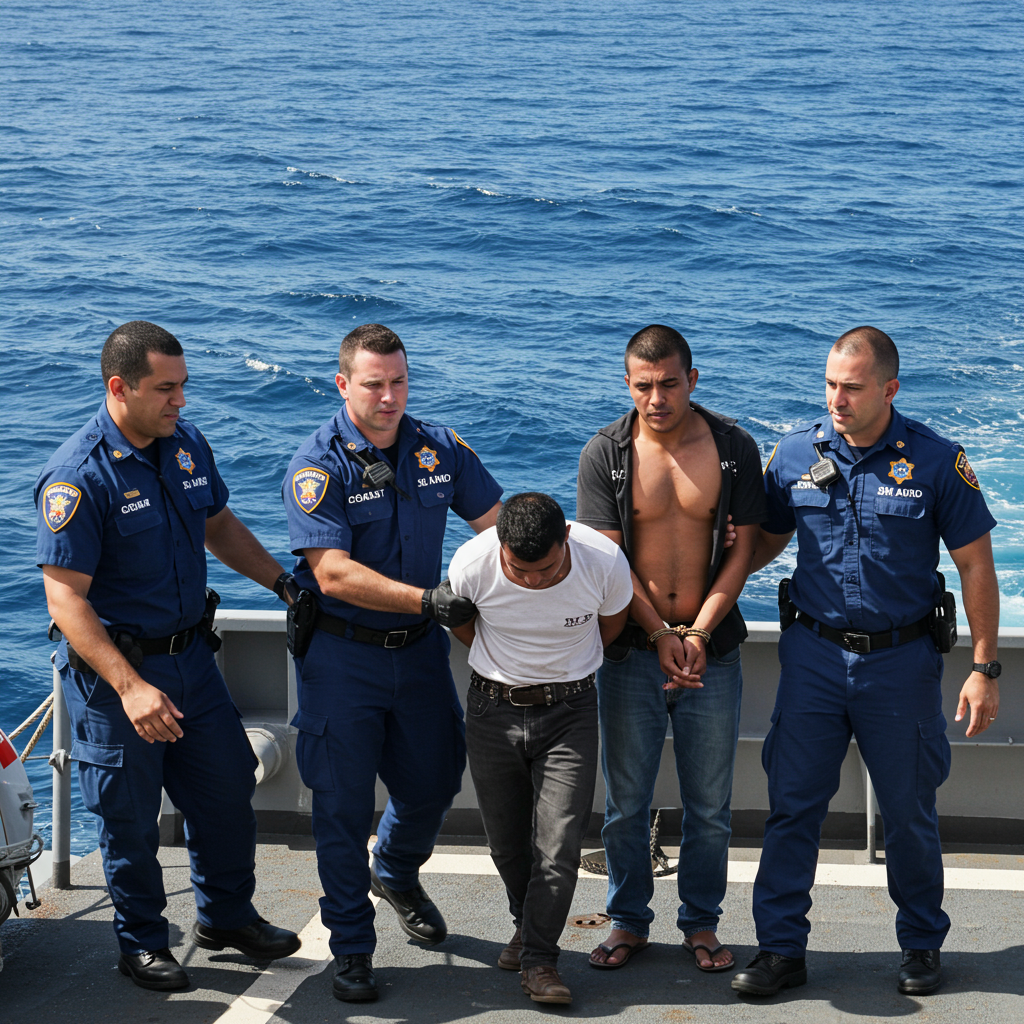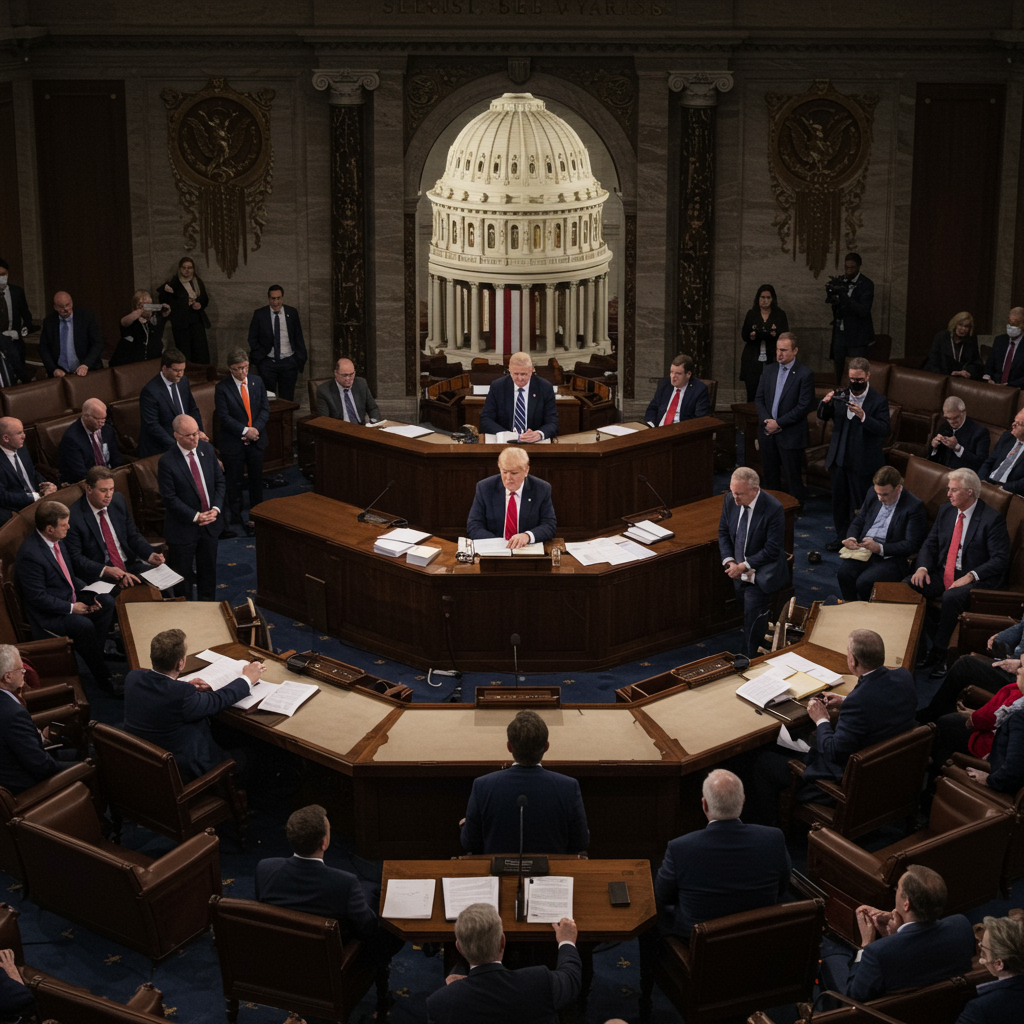The United States has made a pivotal decision regarding the two survivors of a recent military strike on a suspected drug-carrying vessel in the Caribbean. Instead of bringing them into the U.S. legal system, these alleged drug traffickers will be repatriated to their home countries of Colombia and Ecuador for detention and prosecution. This move highlights a distinct shift in the U.S. approach to maritime drug interdiction, emphasizing direct military engagement and a strategy that sidesteps complex domestic legal battles for captured individuals.
US Counter-Narcotics Strike: A High-Stakes Caribbean Interdiction
On a recent Thursday, U.S. military forces executed a dramatic strike against a suspected submersible drug vessel navigating a notorious narcotrafficking route in the Caribbean. This operation, publicly confirmed by former President Donald Trump via social media, underscores an escalating and assertive stance against international drug cartels. The swift action aimed to intercept a substantial shipment of illegal narcotics before it could reach U.S. shores, demonstrating a proactive strategy in the ongoing war on drugs.
The Dramatic Confrontation and its Aftermath
The military engagement was intense, resulting in the destruction of what President Trump described as a “very large DRUG-CARRYING SUBMARINE.” U.S. Intelligence reports confirmed the vessel was laden “mostly with Fentanyl, and other illegal narcotics,” revealing the severe public health threat it posed. While the operation successfully halted the drug shipment, it came at a significant human cost. Two individuals aboard the submersible were tragically killed, a revised death toll that was one more than initially reported. Two other individuals survived the strike, rescued by the American military after the confrontation. This incident marks a critical moment, not only for its immediate impact on drug supply lines but also for the subsequent decisions regarding the survivors.
Repatriation Decision: Navigating Complex Legal Waters
The decision to repatriate the two survivors to Ecuador and Colombia for prosecution, rather than processing them through the U.S. justice system, carries substantial implications. This strategic choice avoids potential legal quandaries for the U.S. administration concerning the precise legal status of the individuals within U.S. jurisdiction. Typically, suspected drug traffickers apprehended by U.S. forces might face charges in American courts, leading to lengthy trials and appeals. However, this repatriation streamlines the process, placing the responsibility for detention and legal proceedings squarely with the nations of origin.
Avoiding Domestic Legal Hurdles
The choice to send the alleged traffickers back to their home countries is a pragmatic one, designed to circumvent the complex legal questions that might arise if they were brought to the U.S. These questions often revolve around jurisdiction, the applicability of specific laws in international waters, and the rights of foreign nationals under U.S. law. By repatriating the survivors, the U.S. minimizes the administrative and judicial burden, allowing partner nations to handle the prosecution. This approach not only expedites justice but also strengthens international cooperation in counter-narcotics efforts, distributing the legal workload and reinforcing the sovereignty of the affected nations. It represents a nuanced approach to international law enforcement, balancing immediate security concerns with broader diplomatic and legal considerations.
The “Armed Conflict” Doctrine: Reshaping Drug Interdiction
A defining characteristic of these recent U.S. military operations against drug vessels is the assertion by the administration that the United States is engaged in an “armed conflict” with drug cartels. This legal justification provides a broad framework for military action, fundamentally reshaping the U.S. approach to drug interdiction. By classifying drug cartels as entities engaged in armed conflict, the U.S. military can apply tactics and authorities typically reserved for traditional warfare scenarios, treating suspected traffickers as if they were “enemy soldiers.” This interpretation is a significant departure from previous strategies that primarily viewed drug trafficking as a law enforcement issue.
Precedent and Future Implications
This “armed conflict” rationale draws parallels with the authority invoked after the September 11 attacks, when the George W. Bush administration declared a “war on terrorism.” Applying a similar framework to drug cartels grants the military extensive powers, including the authorization for direct lethal force against vessels believed to be carrying narcotics. This strategic shift could establish a significant precedent for future U.S. foreign policy and military engagement, particularly in regions plagued by organized crime and illicit trade. The ongoing effectiveness and legality of this doctrine will likely remain subjects of international debate and scrutiny, influencing how nations respond to transnational criminal organizations. It transforms the landscape of counter-narcotics operations from purely policing actions to military engagements, with inherent risks and broadened scopes of permissible action.
The Broader Context: Escalating U.S. Military Engagements
The strike on this particular submersible vessel was not an isolated incident. It marked at least the sixth such attack by the U.S. military on suspected drug vessels since early September, highlighting a persistent and increasingly aggressive posture against maritime drug trafficking routes. These repeated engagements demonstrate a sustained commitment to disrupting the flow of illegal narcotics through military means, particularly in the Caribbean, a key transit region for drugs heading towards the U.S.
The Human Cost and Persistent Threat
With the confirmation of fatalities from this specific strike, the total number of people killed in U.S. military actions against vessels in the region has reached at least 29. This grim tally underscores the dangerous realities and human cost associated with these intensified counter-narcotics operations. Despite these aggressive interdiction efforts, the persistent threat of drug trafficking, particularly the movement of highly potent substances like fentanyl, remains a critical challenge. The continuous flow of drugs necessitates an evolving and adaptable response from international law enforcement and military forces, perpetually seeking new ways to counter sophisticated cartel operations and protect global communities from the devastating impact of illegal narcotics.
Frequently Asked Questions
What specific events led to the U.S. military strike on the suspected drug vessel in the Caribbean?
The U.S. military, acting on intelligence, targeted a suspected submersible drug-carrying vessel in the Caribbean. This vessel was navigating a known narcotrafficking route towards the United States. Former President Donald Trump confirmed the strike via social media, stating that the vessel was loaded “mostly with Fentanyl, and other illegal narcotics.” The operation was part of a broader, intensified effort to disrupt the flow of illegal drugs, marking at least the sixth such attack by U.S. forces in the region since early September.
How does the decision to repatriate drug vessel survivors to Colombia and Ecuador impact international legal precedents?
The decision to repatriate survivors to their home countries for prosecution, rather than bringing them into the U.S. justice system, sets a notable precedent. This strategy explicitly “avoids questions for the Trump administration about what the legal status of the two would have been in the U.S. justice system,” sidestepping complex jurisdictional and legal challenges. It suggests a preference for international cooperation and foreign prosecution in cases involving maritime drug interdiction, potentially influencing future handling of similar incidents and emphasizing the legal responsibilities of nations of origin.
What are the broader implications of the “armed conflict” justification for future U.S. counter-narcotics operations?
The U.S. administration’s justification of these military strikes as part of an “armed conflict” with drug cartels has profound implications. This rationale mirrors the post-9/11 “war on terrorism” authority, allowing the U.S. military to treat suspected traffickers as “enemy soldiers.” This broad interpretation grants the military extensive powers for direct action, including lethal force. It signifies a strategic shift from traditional law enforcement to military engagement in counter-narcotics, potentially expanding the scope of U.S. military involvement in combating transnational organized crime globally.
Conclusion: A Shifting Paradigm in Anti-Drug Warfare
The repatriation of drug boat strike survivors to Colombia and Ecuador represents more than just an isolated legal decision; it signals a strategic evolution in the U.S.’s ongoing efforts against international drug trafficking. By leveraging military force under an “armed conflict” doctrine and opting for foreign prosecution, the U.S. aims to streamline interdiction efforts and mitigate complex domestic legal challenges. This aggressive approach, particularly against high-value targets like submersible vessels laden with fentanyl, highlights a proactive and assertive stance. As the global battle against narcotics continues to evolve, these precedents will undoubtedly shape future international cooperation, legal frameworks, and military engagements in the relentless pursuit of disrupting the illicit drug trade.



